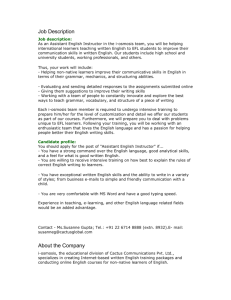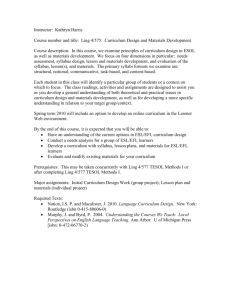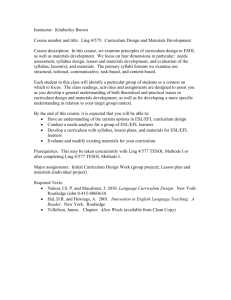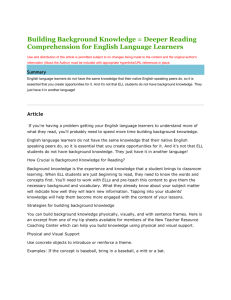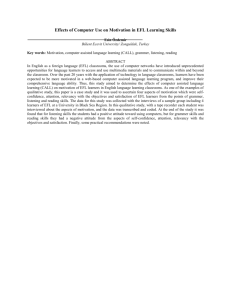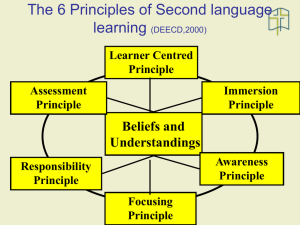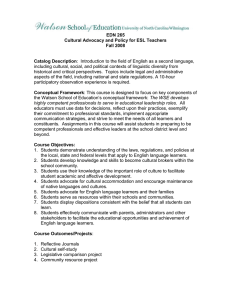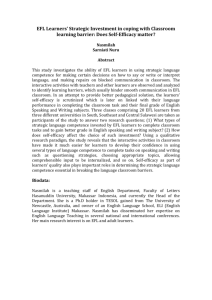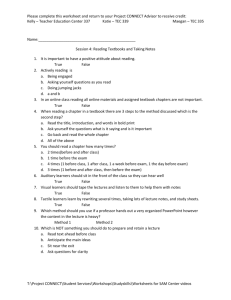AB1501-0116-0072
advertisement
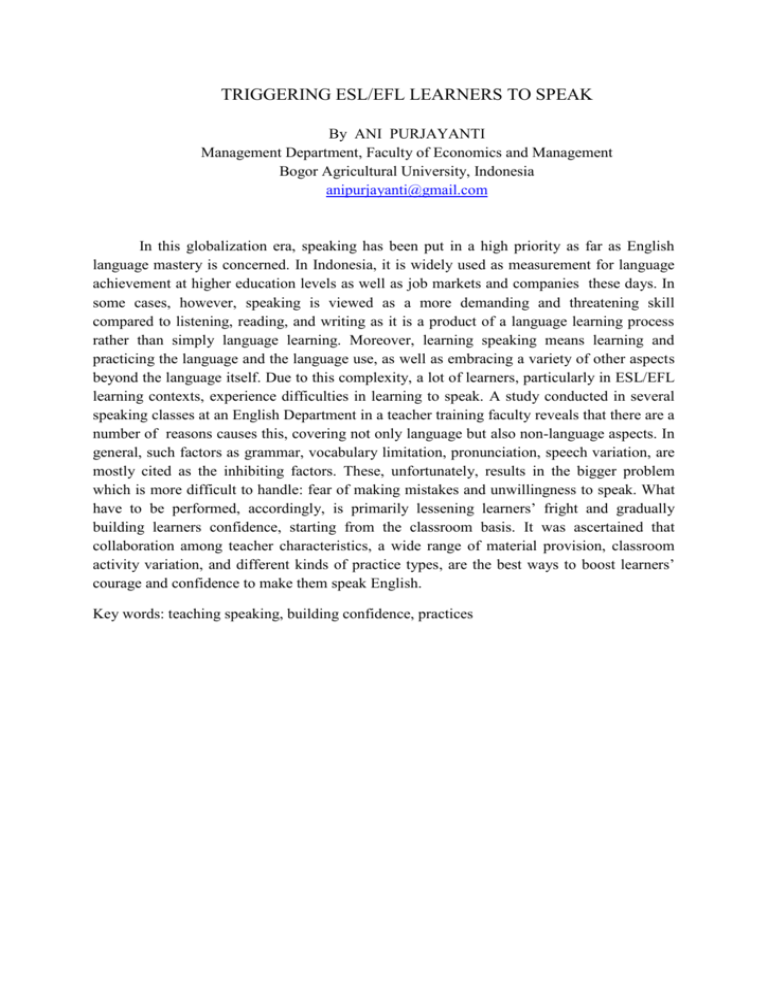
TRIGGERING ESL/EFL LEARNERS TO SPEAK By ANI PURJAYANTI Management Department, Faculty of Economics and Management Bogor Agricultural University, Indonesia anipurjayanti@gmail.com In this globalization era, speaking has been put in a high priority as far as English language mastery is concerned. In Indonesia, it is widely used as measurement for language achievement at higher education levels as well as job markets and companies these days. In some cases, however, speaking is viewed as a more demanding and threatening skill compared to listening, reading, and writing as it is a product of a language learning process rather than simply language learning. Moreover, learning speaking means learning and practicing the language and the language use, as well as embracing a variety of other aspects beyond the language itself. Due to this complexity, a lot of learners, particularly in ESL/EFL learning contexts, experience difficulties in learning to speak. A study conducted in several speaking classes at an English Department in a teacher training faculty reveals that there are a number of reasons causes this, covering not only language but also non-language aspects. In general, such factors as grammar, vocabulary limitation, pronunciation, speech variation, are mostly cited as the inhibiting factors. These, unfortunately, results in the bigger problem which is more difficult to handle: fear of making mistakes and unwillingness to speak. What have to be performed, accordingly, is primarily lessening learners’ fright and gradually building learners confidence, starting from the classroom basis. It was ascertained that collaboration among teacher characteristics, a wide range of material provision, classroom activity variation, and different kinds of practice types, are the best ways to boost learners’ courage and confidence to make them speak English. Key words: teaching speaking, building confidence, practices

